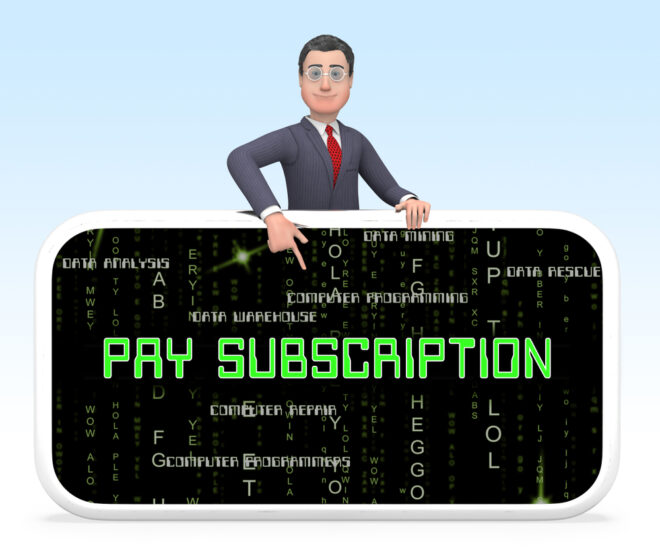One of the decisions that gives budding membership site owners the most trouble is whether access to their site should be free or paid for.
Similarly, they can have issues determining which content they should charge for or when they should make the switch to a paid subscription.
This post will help you with such decisions by exploring when your site should be free and when you should charge members
Free?

Little Content or Traffic
The soundest reasoning for making your membership site free is if you have little content and/or few visitors.
In such a situation, you’re trying to establish yourself and need to concentrate on increasing the amount of content on your site and the traffic it receives before worrying about charging your members.
Chances are, your membership site’s concept, or value proposition, needs a little work before it generates the profits you envision.
Attracting more visitors and paying attention to the kind of content they respond to will help with that.
Content Breadth, But Little Depth
A second reason, related to not having much content, is said content not going into much detail.
While having a lot of content could be described as having a good breadth of content, its detail can be described as its depth.
The greater the content’s depth, the better the reason to charge for it.
Let’s say, for instance, you run an online personal training membership site: Your content breadth would include having lots of articles which extol the virtues of particular exercises and healthy foods.
Content depth, on the other hand, would be a 21-day body transformation program which arranges those exercises into a routine and the healthy food into a meal plan.
Put another way, you’d be providing the what or why for free (the articles) while charging for the how (the program).
Your members signed up to your site to solve a problem.
Much of the time, they’ll have a decent understanding of the whats and whys of the solution to their problem and are turning to you for a how – which they’ll be most willing to pay for.
Lots of Competition

Another reason for allowing your site to be free is if you have a lot of competition.
This would mean there are many alternatives to the products or services you offer.
Your visitors, or rather, potential customers, have choices and have little reason to pay for a subscription to your site.
Often, competition is a matter of perception, namely self-perception, and not yet knowing what distinguishes you from similar membership websites.
In such cases, you need to carry out an honest and thorough assessment, of both yourself and your competition, to discover what makes you stand out.
Surveying your customers, to see what they most value about what your offer will also increase your awareness of what makes you special.
Paid?

Lots of Content
The first reason for charging for access to your membership site is having a lot of content.
This could mean starting out with a large amount or steadily increasing the volume after starting with very little.
If you have a lot from the get-go, you could charge members for a subscription, with a large content library and the convenience of it all being in one place a key selling point.
A good example of this is a video streaming service.
With such sites, you can prove the value of a subscription with a free trial.
Conversely, if you began with a small amount of content and increased it over time, you can justify making the change from a free membership to a paid one.
Sure, charging for access is bound to upset some of your members; you’re charging them for what they’ve become accustomed to getting for free, after all!
However, those that have noticed the increase in content and receive value from it will be willing to pay.
Deep Content

A second reason for a paid membership is if it offers a degree of content depth worth paying for.
As mentioned above, many content marketing specialists advocate giving away the shallow what or why of a solution while charging for the deeper how – what and why for free, how for a fee!
A good example of this is an online course provider: the what of the course in its description, which details everything you’re set to learn upon signing up.
The why is the reason for prospective enrollees signing up for the course; the benefits they stand to reap.
This could be something as powerful as wanting to significantly improve their job prospects and earning potential, to something as simple as satisfying their intellectual curiosity.
The how is the course content itself, which they have to pay for.
It’s entirely plausible that your site could be free while only containing what/why content, and you could add a paid option, or tier, when you eventually launch some deeper how content.
If you’ve built up a following while your site was free, informing your existing members can yield positive results, as they may be interested in your new offering.
You would have had the time and opportunity to prove your worth before requesting payment for what you bring to the table.
Another way to look at depth is not just the level of detail in the content you produce, but the level of access your members have to you.
For those that work in the service industry, a membership site presents potential liberation from the ‘time for money’ loop.
Instead, a membership site lets you leverage your time, allowing you to package and present your expertise in a way that reaches more people.
Though many, if not most, will be happy with the level of access they have, some will want more – and it’s those clients that will have to pay more. The simplest way of doing this is to offer a paid membership option which grants greater access to you.
Some businesses have used this concept to develop multiple tiers, with access that increases with the subscription fee.
You Have a Niche

Finally, you should charge for membership if you have a solid niche.
A niche makes you a specialist instead of a generalist; almost by definition, it means you have way less competition.
As your prospective members have few alternatives, your products or services have more value.
This means they’re more likely to pay to become a member of your site.
Understanding your niche also means developing an understanding of your market as a whole and where you fit within it.
You’ll know who your closest competition is, what they offer, what they charge for membership, and how you measure up against them.
Knowing this, you can then decide how much to charge and how to improve your offering in order to provide more value, attract more members and increase your profitability.
In conclusion, when considering whether your site’s membership should be paid or free, it’s important to remember that you don’t sell content or even access to yourself or a community.
Above all else, you sell solutions to problems.
Looking at your products and services in this way will help you determine how valuable they are to a prospective customer and how much you can charge for them.
The more value you’re providing, the more you can feel justified in charging for membership.






 © All rights reserved, BUDDYBOSS LLC 2024
© All rights reserved, BUDDYBOSS LLC 2024




